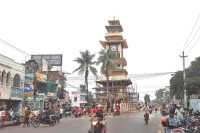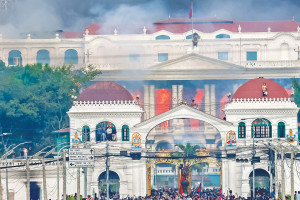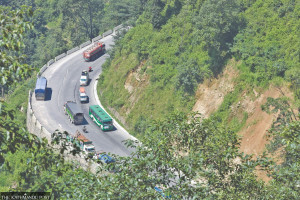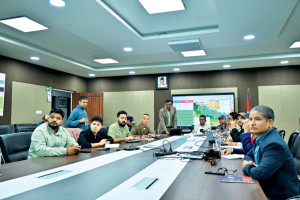Money
Third wave may stall construction activities, another setback for economy
The current season is considered good for construction in Nepal, and rising Covid-19 cases are likely to hamper the activities.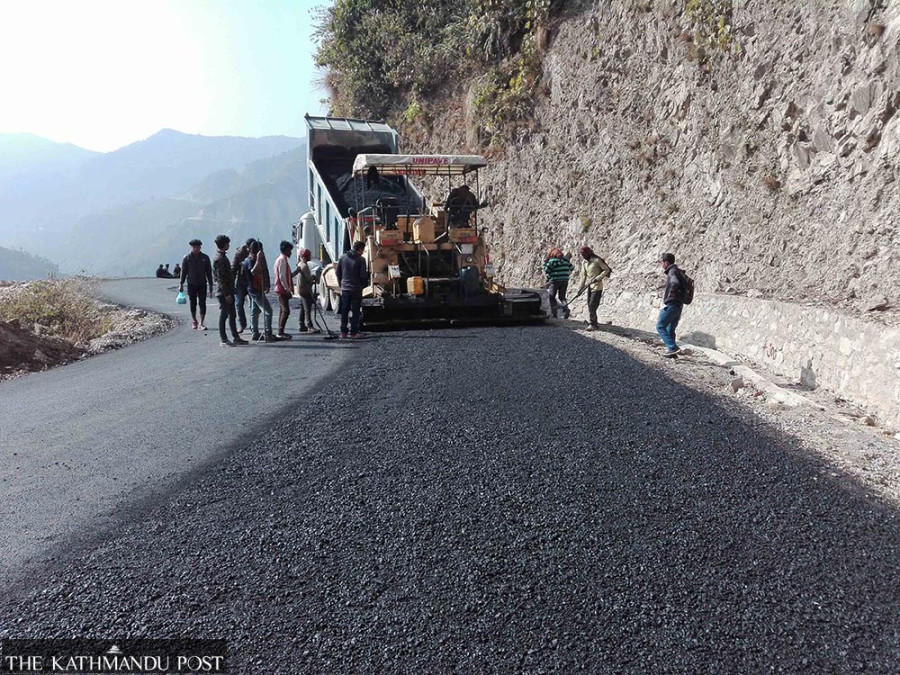
Prithvi Man Shrestha
Bhimeshwor Drilling Tatha Nirman Sewa, a construction company, has seen the departure of around five dozen workers from its under-construction projects in the last two days, citing the growing threat of Covid-19 in Chitwan and Gulmi.
“I have received reports that over 60 workers have left the construction sites— two roads and a building project—and headed home on Tuesday and Wednesday alone,” said Sahadev Khadka, managing director of the company. “They got worried after the coronavirus cases started to rise.”
His company is involved in widening Pulchowk-Gyondryang road in Bharatpur, Chitwan to six lanes, building a large city hall in Bharatpur Metropolitan City and constructing part of Madan Bhandari Highway in Gulmi.
He has employed around 500 workers in these three projects, he said.
“Workers and technical staff have started to seek leave citing family members’ concerns about their health,” Khadka told the Post over the phone.
The current season is considered good for construction in Nepal, and rising Covid-19 cases are likely to hamper activities.
Nepal over the last 10 days has seen a steep rise in Covid-19 cases—from 213 on January 2 to 3,353 on January 13. Also, the new variant of the virus, Omicron, which is said to be highly contagious, also has already made its foray into the country.
Local authorities are imposing their own restriction measures, and workers fear they might not be able to return home if there is a new lockdown.
In Nepal, construction activities usually pick up after Dashain and Tihar festivals, and most of the capital budget is spent in the second half of the fiscal year. The country is just about to complete the first half of the current fiscal year that started in mid-July.
“The period between mid-January to mid-June is when construction works speed up and most of the capital budget is spent in these five months,” said Khadka.
As of Wednesday, only 10.22 percent of the total capital budget has been spent, according to the Financial Comptroller General Office which keeps records of the government’s income and expenditure.
Even though Finance Minister Janardan Sharma promised in September that the government would spend 10 percent of the capital budget every month, it has not been reflected on the ground.
The failure to spend capital budget has also been one of the reasons why the banking system is facing a liquidity crunch as government resources, which should be flowing through the banking system, are being parked in its treasury. As a result, most banks have suspended further lending.
A significant increase in public investment in the construction sector would create jobs. The money invested by the government goes to the contractors, consultants and workers and their spending to buy goods and services brings the government’s spending into the market.
Capital expenditure is a crucial booster for the economy because low spending means money remains in the government’s treasury, which does not come into the banking system.
This is the third year in a row that the coronavirus is threatening the country’s construction activities.
After Nepal reported its first coronavirus case in the third week of January in 2020, the government imposed a lockdown starting March 24, which lasted for four months. The peak season of construction activities was wasted.
After cases declined in July 2020, activities resumed and businesses opened up. But in April last year, the second wave hit the country, and it was far more devastating than the first wave. The country went into lockdown again, also in the peak construction season.
This time, Omicron-driven infections have already set off alarm bells. Hospitalisations are up. More people are testing positive by the day. Daily positivity rate has been rising.
District Administration Offices of Kathmandu Valley—Kathmandu, Lalitpur and Bhaktapur—have already banned gatherings of more than 25 people. District Administration Offices across the country are also taking similar measures, depending upon the situation. Schools across the country have already been shut down until January 29.
The construction industry’s contribution to the Gross Domestic Product stood at 5.7 percent in the last fiscal year 2020-21, according to the Central Bureau of Statistics.
An official at the Department of Road, which spends the largest share of the capital budget every year, told the Post that his office has not received any reports about the implementation of development projects being affected so far.
“If the number of cases continues to increase, it will definitely affect the implementation of road and bridge projects,” said Shiva Prasad Nepal, deputy director general and spokesperson at the road department. “If a worker is infected with the coronavirus, other workers may not be ready to work.”
Officials, however, say as long as the government doesn't impose a lockdown, construction activities would not be affected severely.
“So far, no lockdown has been announced,” Nepal said.
The road department says it is not expecting a strict lockdown this time.
“Even if a lockdown is imposed, its impact will be relatively lower compared to the past lockdown because we have learned to work cautiously under lockdown situations in the last two years,” said Nepal.
The first lockdown from March 24 to July 21 in 2020 had a devastating impact on the country’s economy. The country witnessed negative economic growth of 2.1 percent for the first time since fiscal year 1982-83.
The road department had witnessed capital spending of 65 percent in fiscal year 2019-20. The capital spending of the department increased to 76 percent in last fiscal year 2020-21, according to Nepal.
The department has targeted capital spending of 80-85 percent in the current fiscal year.
“Due to the new wave, meeting the target is going to be a challenge,” said Nepal. “There are, however, hopes that we can speed up development work in the fourth quarter if the new wave does not prolong.”
Capital spending of the government has remained poor during the first half of the current fiscal year compared to the same period last fiscal year.
The road department had spent 18 percent of the budget by this time last fiscal year compared to 15 percent so far, according to Nepal.
“Capital spending remained poor this fiscal so far because of the replacement bill which amended the original budget leading to a delay in the implementation of development projects,” said Shivahari Sapkota, director general of the road department.
The incumbent Sher Bahadur Deuba-led government had presented the replacement bill at the parliament in September last year amending the budget presented by the previous government led by KP Sharma Oli in May last year through an ordinance.
Now as the country stares at the third wave, implementation of development projects are likely to be affected.
Prakash Shrestha, chief of economic research division at the Nepal Rastra Bank, does not see substantial impact on construction activities like in the first and second waves.
“We know more about the coronavirus now than when the first wave hit the country in early 2020,” he said. “We could continue development activities to some extent during the second wave last year compared to the first wave despite the second wave being more dangerous. So there is room for continuing development work even if the new wave hits the country.”
One of the reasons there is confidence among some is vaccination. Nepal so far has managed to fully vaccinate 38.5 percent of the total population, according to the Health Ministry. Though the vaccination rate has been dismal lately, vaccines have boosted confidence.
Shrestha said that it would be definitely difficult to implement projects during a pandemic compared to normal times, hence capital spending could be hit.
“Much depends on how the situation evolves,” he said. “If the new wave subsides soon after reaching a peak, just like in some other countries, we can expect construction activities to pick up pace in the fourth quarter.”
Officials say the pandemic, however, could help ease the liquidity situation, as aggregate demand for cash will come down and imports will slow.
“But that’s just one aspect and we need not be very excited about that,” said Shrestha. “Despite positive impact on liquidity, reduced economic activites will mean the country’s economic growth will suffer.”




 17.12°C Kathmandu
17.12°C Kathmandu



